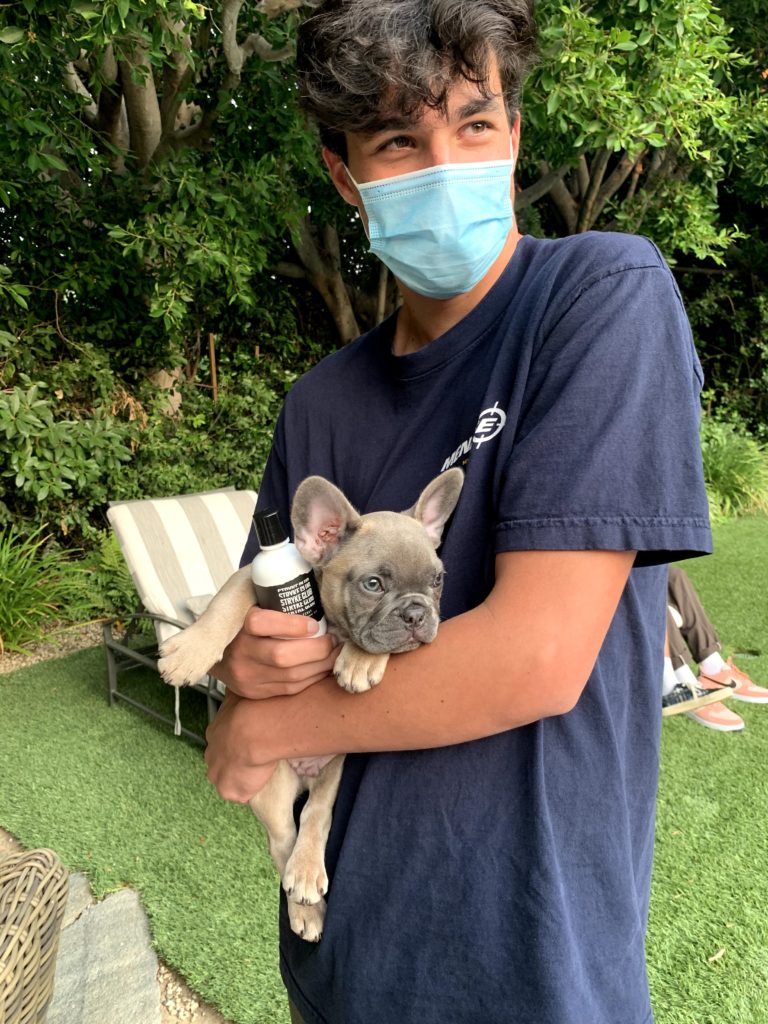Dermatologists practicing during the challenging pandemic have noted more phone calls from concerned parents about skin rashes showing up around the mouths of children who are wearing masks regularly. As the school year progresses, it is very likely that mask wearing for longer time periods will be required of our children, so these complaints about ‘maskne’ will only continue to increase. It is important for readers to note that ‘maskne’ (or rashes related to mask wearing) is real; and the rashes we are observing are not all the same, and they vary by age.
Maskne in school-aged children (pre-adolescent)
School aged children can get flares of eczema and irritant dermatitis under their mask area, but they also seem to present with a slightly different type of rash under the mask area – perioral dermatitis. Perioral dermatitis is a persistent and frustrating condition leading to fine bumps and small pustules around the mouth and eyes. This type of rash can be seen in children and adults with skin rashes due to mask wearing. Though the exact cause is unknown, some experts believe it may be a hypersensitivity reaction to mites, yeast or other regular skin microbes. There is no doubt however, that the occlusion and friction from wearing a mask will only exacerbate this condition.
Dermatologist Dr. Sheilagh Maguinness recommends taking precautions to avoid perioral dermatitis due to mask wearing in school aged children. Make sure the mask and the child’s face are both clean. Cotton or paper masks are preferred, launder them regularly. Keep all products gentle and hypoallergenic, such as non-detergent based cleansers and fragrance free emollients, to cleanse and protect the skin before applying the mask. Reapply the moisturizer throughout the day and try to have the child take breaks from wearing the mask when it is safe to do so. Although it is tempting to use an over the counter topical steroid/cortisone on this red bumpy rash, the best advice is try to avoid it! Topical steroids may make perioral dermatitis worse.
Maskne in Teens
Maskne developing in teens is definitely the largest concern, as teens are more likely to be able to keep the masks on throughout the day as recommended, and thus are more prone to the adverse effects. The emerging skin rashes in masking adolescents are similar to those described above, namely perioral dermatitis and irritant dermatitis. However, flare-ups of true acne vulgaris (i.e., inflammatory acne) are also becoming more common. How do you tell the difference? Look for blackheads and whiteheads, these are called ‘comedones’. If you see comedones, the rash is more likely due to a true acne flare-up. Wearing the mask traps oils, sweat and irritants against the skin. This can lead to ‘occlusive acne’ (also generally known as ‘acne mechanica’) due to occlusion of the pores, leading to comedones and then eventually inflamed papules and pustules around the mouth.

For true acne flares under the mask, we still recommend treating the skin very gently. Non-detergent cleansers and fragrance and oil-free lighter moisturizers are helpful. At the very least, we need to get our teens into a good skin care regimen – have them cleanse their face with a non-detergent cleanser twice daily – ideally before they apply their mask. In addition, an oil and fragrance-free lightweight moisturizer can be applied to damp skin before putting the mask on. Re-applying the emollient in a thin layer a few times throughout the day can also help protect the skin. If there are many comedones and inflamed papules, it could be that an acne treatment might be needed. One over the counter option is adapalene gel, but it should be used carefully as it can also be irritating. Even 1-2 times a week in a very thin layer (less than a pea sized amount) to the affected area could be helpful before bedtime – not directly under the mask. If it is too irritating, it’s best to take a break and use a light moisturizer as described above. If things are not improving, or if you see any early scarring, it is time to see your dermatologist or pediatric dermatologist. Most practicing right now will offer a tele-health or tele-dermatology visit to avoid the need to come into the clinic in person.
It’s important for us all to remember that our teens are also under more stress than ever. Stress never makes acne better! Social isolation compounded by complexion problems can trigger anxiety, poor self-esteem and depression, so parents and care givers should be watching for mood symptoms in addition to the maskne in our teens.